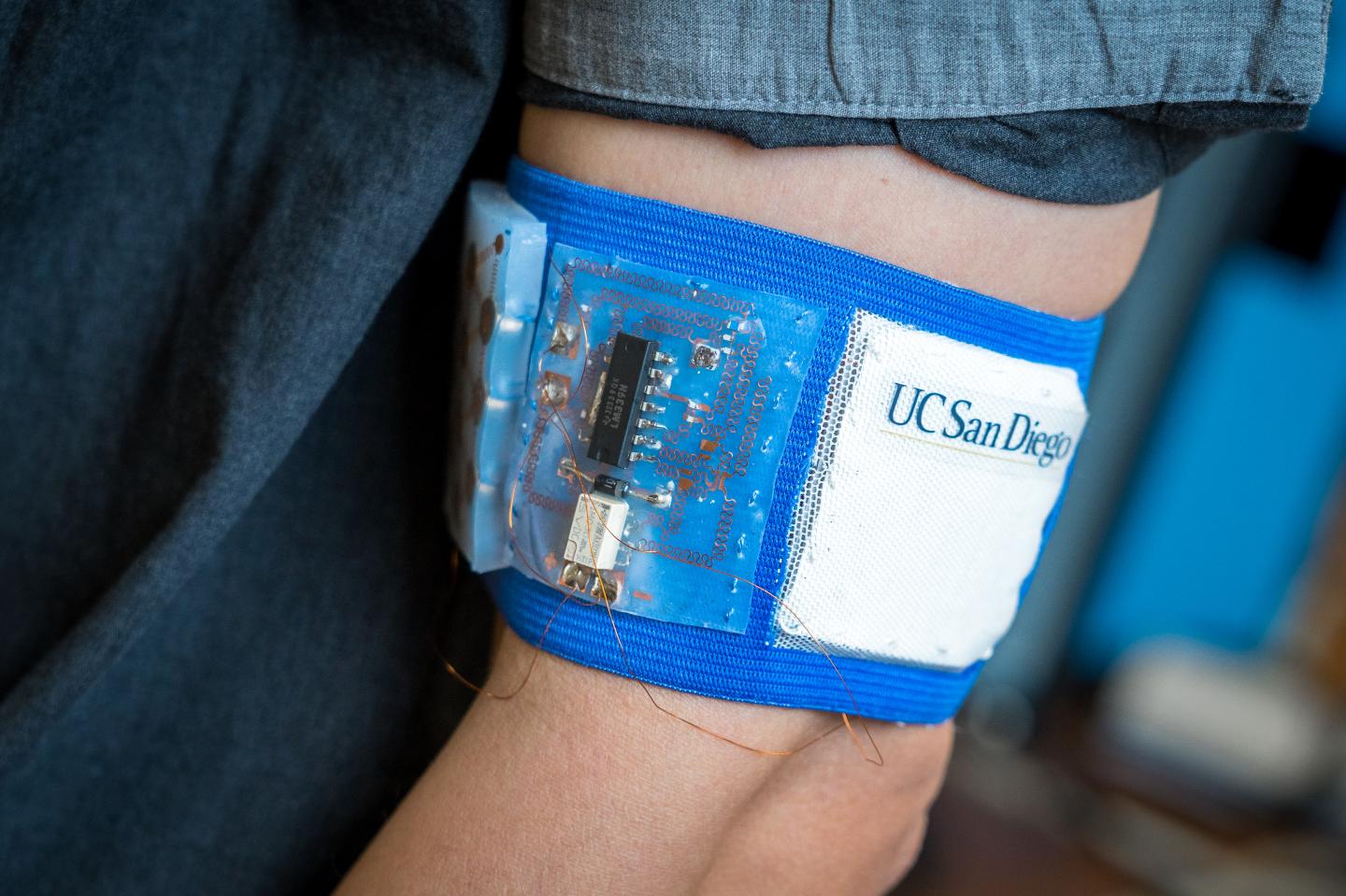
A wearable patch that provides personalized cooling and heating on-the-go has been developed by engineers at the University of California San Diego.
The team’s work, published in the journal Science Advances (citation below), describes a soft, stretchy patch that’s capable of warming or cooling a user’s skin as the ambient temperature changes. The patch is powered by a flexible and stretchable battery pack.
According to the researchers, the device, which is at the proof-of-concept stage, could help cut the amount of energy used for heating and air conditioning.
“This type of device can improve your personal thermal comfort whether you are commuting on a hot day or feeling too cold in your office,” said Renkun Chen, a professor of mechanical and aerospace engineering at UC San Diego who led the study.
“If wearing this device can make you feel comfortable within a wider temperature range, you won’t need to turn down the thermostat as much in the summer or crank up the heat as much in the winter,” Chen added.

The patch was designed to be lightweight, flexible and easy to embed in clothing. The patch is made of thermoelectric alloys placed between stretchy elastomer sheets.
According to the abstract of the study, the thermoelectric device “is the first to achieve long-term active cooling with high flexibility, due to a novel design of double elastomer layers and high-ZT rigid TE pillars.”
“You could place this on spots that tend to warm up or cool down faster than the rest of the body, such as the back, neck, feet or arms, in order to stay comfortable when it gets too hot or cold,” said first author Sahngki Hong, a UC San Diego mechanical engineering alumnus who worked on the project as a PhD student in Chen’s lab.
A prototype of the patch was tested in a temperature-controlled environment. The patch cooled the skin of the person testing the device to 89.6 degrees Fahrenheit and kept it at that temperature as the ambient temperature varied between 71.6 and 96.8 degrees Fahrenheit.
This patch is an example of a wearable smart device or wearable computer.
Citation
“Wearable thermoelectrics for personalized thermoregulation”
Sahngki Hong, Yue Gu, Joon Kyo Seo, Joseph Wang, Ping Liu, Y. Shirley Meng, Sheng Xu and Renkun Chen.
Science Advances 17 May 2019: Vol. 5, no. 5, eaaw0536
DOI: 10.1126/sciadv.aaw0536
